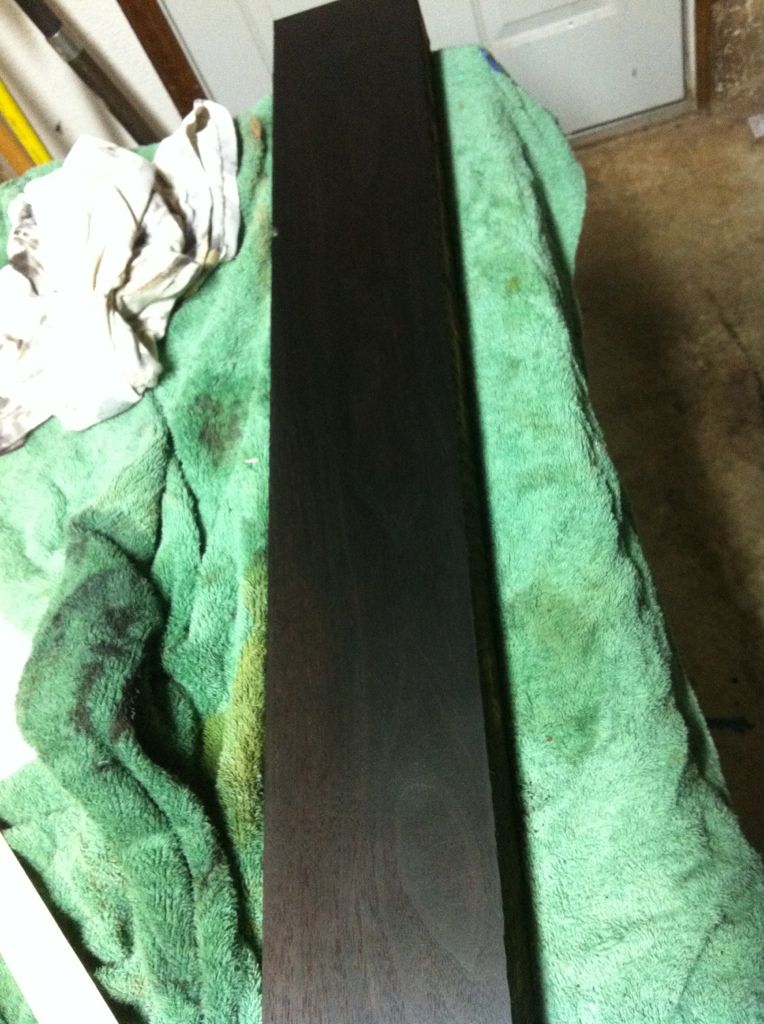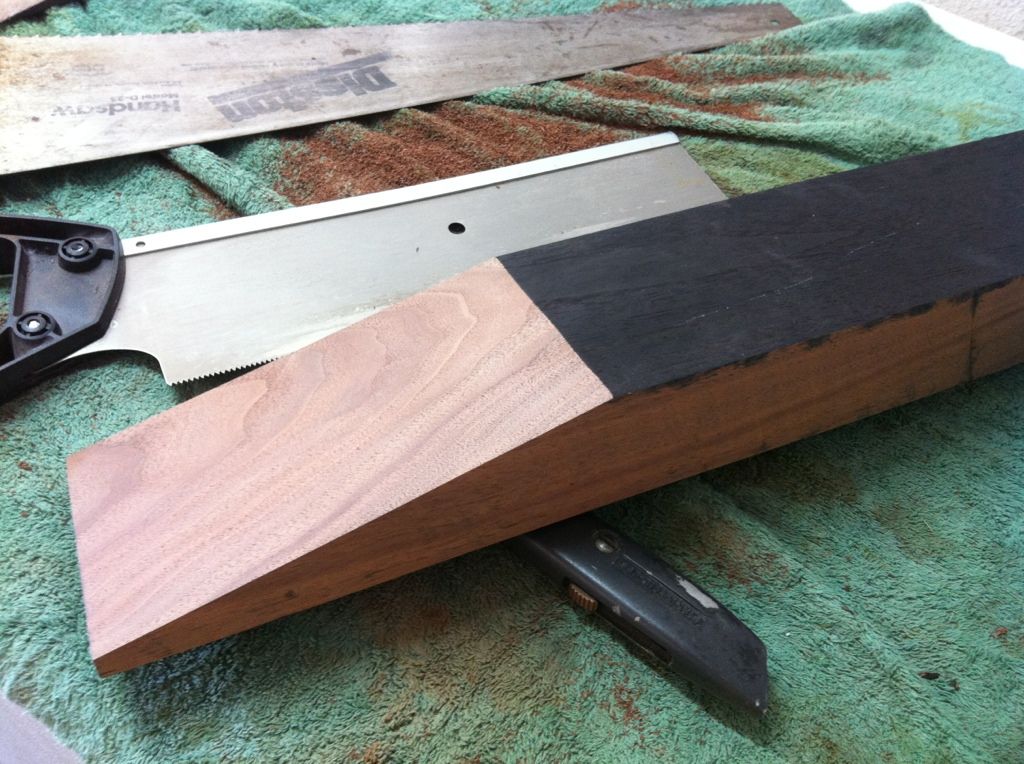Looking at all these boards, it's clear that Tom just bought a tree. He did not hand pick wood for appearance. Knots, inconsistent color, sapwood and weird grain patterns make these boards "paint grade" by any reasonable standards. Despite that, people become apoplectic when I mention covering the defects. "It's walnut," they cry. "You don't hide walnut."
Well, you do when the appearance isn't up to standards.
I really don't want to paint. It's a lot of work making a nice looking paint job.
Plus, since walnut is so hard, it doesn't need a great deal of protection. Of course you want to protect from water but it doesn't need much cover from dings and that's why tru oil is so popular with walnut.
Tru oil will darken the wood but won't cover imperfection or correct color. A stain is needed.
I did one test the other day with two stains. First, a dark walnut stain, then an ebony stain. Covered with linseed oil. (Obviously not tru oil but the appearance is the same)
Of course, this wood was rough with no sanding or anything but you get the idea. Dark, but still not hiding everything.
Next, I used Jello's ebonizing trick on the neck board. You need to check each sample, as some don't darken completely and others can be splotchy.
The key ingredients to this "stain" are rust and vinegar. I make my solution by dissolving part of a steel wool paving a jar of vinegar. Any iron will do fine, but the insane amount of surface area on the steel wool means that it desolves completely in a few days, yielding a potent ebonizer.
The effect is striking and is not a dye like a typical stain. The rust reacts with tannic acid in the wood to create the black color. It actually changes the color of the wood.
This is the same effect as leaving a wet glass in an oak table where a black ring gets left behind. Only a handful of woods have tannic acid present in enough concentration to produce the effect.
Maple will to a lesser extent. It turns a pale blue color.
Anyway, enough lecture. Here is the neck, planed and sanded to 150. I scrubbed the solution in with a 0 steel wool pad. A real rough one. That's to make sure the solution penetrates to the bottoms of those deep pores. If you don't get it worked in well, you have natural walnut colored pores and an ebonizer surface.
After staining, I polished it clean with a t shirt and applied one coat of linseed oil.












